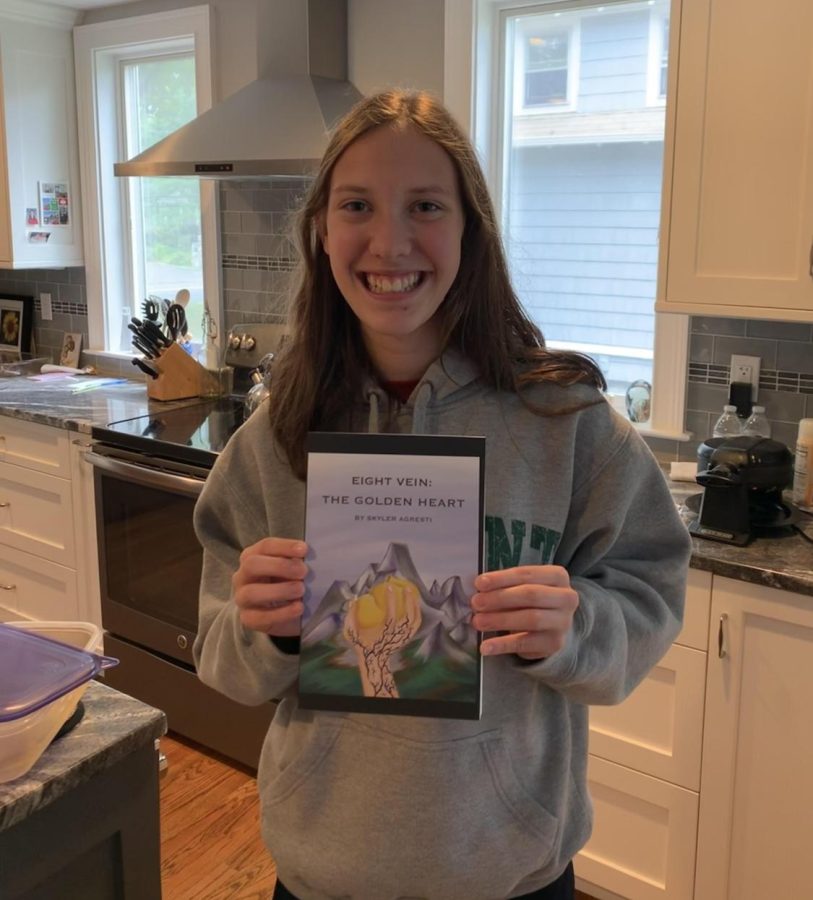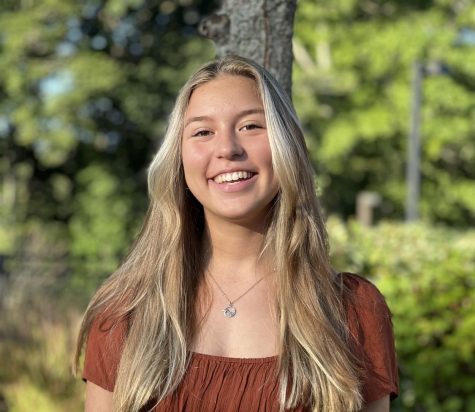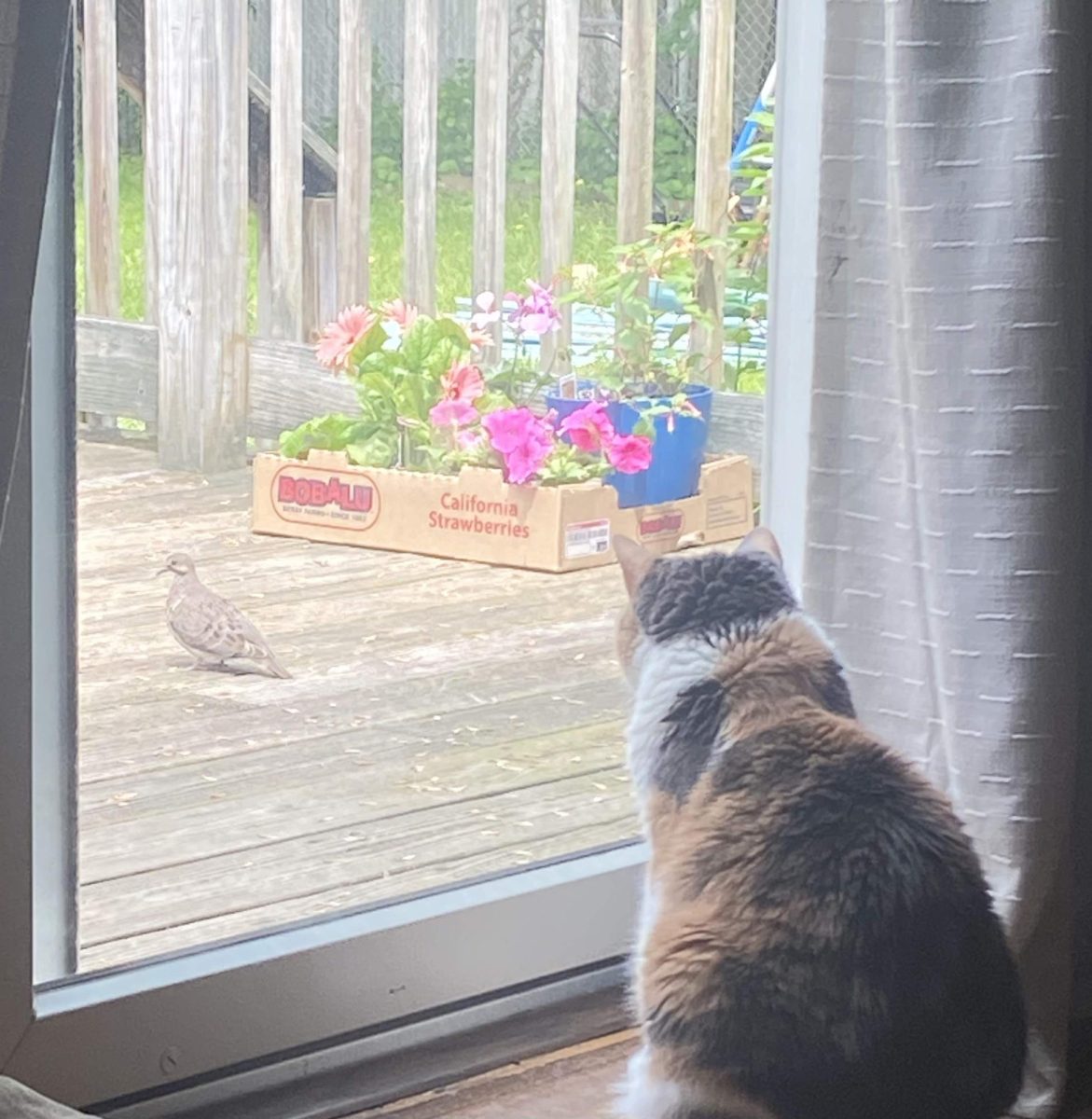On The Write Track
Skyler Agresti’s Novel Idea Becomes Reality
Flashback to First Edition: Skyler with her first novel, EIGHT VEIN: THE GOLDEN HEART.
November 2, 2021
At 12 years old, most kids are just beginning to explore the prospect of future aspirations. However, Skyler Agresti got a head start at the same age and used the literary works written by her 12-year-old self to publish her first novel on September 12, 2020, during her sophomore year. Agresti, now a junior, seeks to elaborate on her established series in the upcoming publication of her sequel.
Agresti cites an early love for reading and an active imagination as driving forces behind the creation of her series. The direct inspiration behind her first book, titled EIGHT VEIN: THE GOLDEN HEART, came to the young author in a dream.
The initial installment of the series follows S14, a spy who works for an organization called the “Archeners” in the defense of a pre-civilization world against the takeover of the “Reechers”. S14 is an “Eight Vein”, a magical creature who can heal herself. This powerful immortality is accompanied by a fatal weakness the soldier must work around for the good of society.
The currently unreleased sequel takes a “further dive into S14’s character and what she does in different situations,” according to Agresti. She plans to publish this next addition as soon as possible.
The publishing process entails many complex steps, according to Advanced Creative Writing teacher Mr. Rick Raucci.
Raucci explains, “As each draft is submitted for feedback, students make many different edits and changes to their work to strengthen it. They are then tasked with formatting it so it is accepted by the publisher and editor.” Finally, authors send their manuscript to print, where proofreading precedes the final printing of the novel.
Mrs. Lauren O’Keefe, English teacher and department head, explains this process for students is equated with the ethic of published, adult writers.
O’Keefe says teens still have to “come up with an idea, get their idea on paper… be open to accepting feedback, [and edit] to make it… their best piece of work.”
However, there are slight differences between the work of students and professional authors. Students must perform as an author while juggling clubs, sports, and other extracurriculars. For Agresti, a varsity soccer player and president/active participant of multiple clubs, an additional challenge was presented as she kept the project to herself.
“It was hard to find time, especially because I didn’t want anyone to find out I was writing it,” Agresti says.
To ensure her idea remained a secret, but still progress on her manuscript, Agresti woke up an hour before school started. At age 12, she would rise at five in the morning to advance on the writing journey.
There was still another challenge: dealing with criticism, a touchy subject for the novelist.
“Editing was hard just because I feel like I need to be more open to other people’s opinions,” says Agresti.
Between her first book and the preparation of the release of the sequel, newfound maturity allowed for understanding of editing’s purpose. This complemented Agresti’s other literary strengths.
O’Keefe, who supervised the independent study dedicated to Agresti’s sequel, describes her as creative and with “strong ideas.” She’s “very good at creating a story from a character’s perspective that’s very interesting, builds suspense, and makes you want to keep reading.”
Foran should stay on the lookout for this new release by an upcoming author in the school community.








